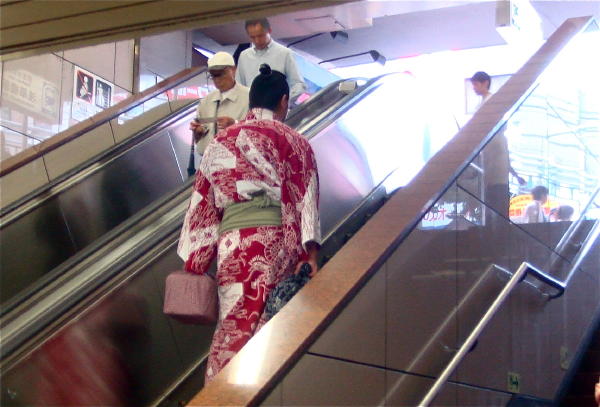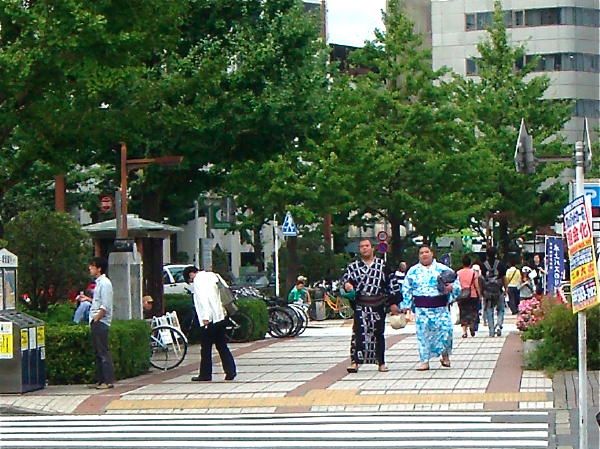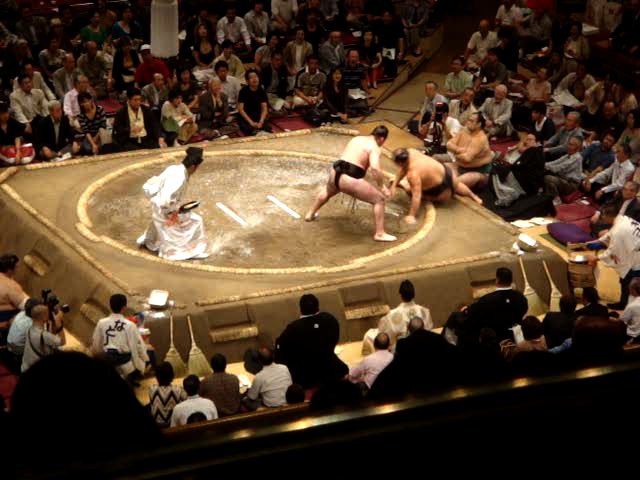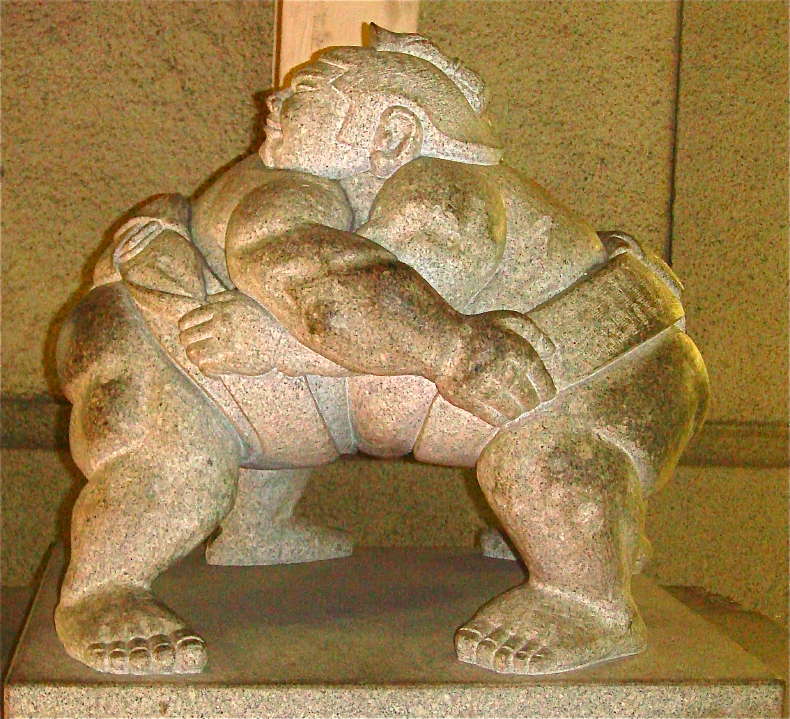 |  |
 |
| Tokyo Basho |       | |
Playing NiceSumo, the ancient art of gentlemanly combat.Having been through sumo cram school (offered by our friends Mark Brown and Mary-Claire VanLuenen), we jumped at the chance to go when Makiko Ogawa invited us to the 7th day of the 14 day September Tokyo basho. And it was a ton of fun!
|
|
| To Sustain Ourselves | Makiko had arranged lunch at a sushi restaurant that prepares the fish in the manner of the Edo
Period. Today the restaurant is run by generation number 6. If this lunch is any indication, the
Edo-ians ate very well!
|
| The Commute | Even
sumo wrestlers have to get to work. We were surprised, however, to see
them taking the subway and just walking down the street. No limos, just
workers headed off for the daily grind with their pink lunch buckets.
|
| Fan Base | Before taking our seats, we stopped by the locker room door to see the wrestlers arrive. Their fans were on hand,
including this little guy, who got autographs from nearly all of the stars.
|
| Battle Field | The matches take place on a packed dirt platform with a straw ring, into which wrestlers toss purifying salt.
|
| Doing The Wave | Sumo is loaded with traditions and pagantry. These wrestlers make up one side of the championship level matches.
They aren't a team -- they are just presenting themselves as the men who will be taking the West side of the
ring.
|
| In The Ring | The matches begin with stretching and many tradition-based formalities. The actual wrestling is very brief. This
match took less than 4 seconds.
|
| Post Game | The
sumo was exciting, and going into the second week, Hakuho was leading.
[He would eventually win it all before the final night!] Time to
celebrate! The Ogawas took us to dinner at a restaurant run by a former
sumo. The specialty is chanka nabe, the food served to sumos in
training! Cooked at the table, it is a multitude of meats, sea foods
and vegetables cooked in a broth. It was so good, we tucked into it as
if we weighed 150 kilos, or would soon!
|
|
We have been told that some sumo champions, when they are in the
embrace of their opponent, close their eyes, relying on their sense of
feel to determine how to adjust their grasp or leverage their power. In
this, wrestling parallels the appreciation of sculpture -- Helen Keller
said "I sometimes wonder if the hand is not more sensitive to the
beauties of sculpture than the eye. I should think the wonderful
rhythmical flow of lines and curves could be more subtly felt than
seen." And as we arrived at the station, we, like many before us,
caressed the granite statue of these sumo combatants.
|
|












